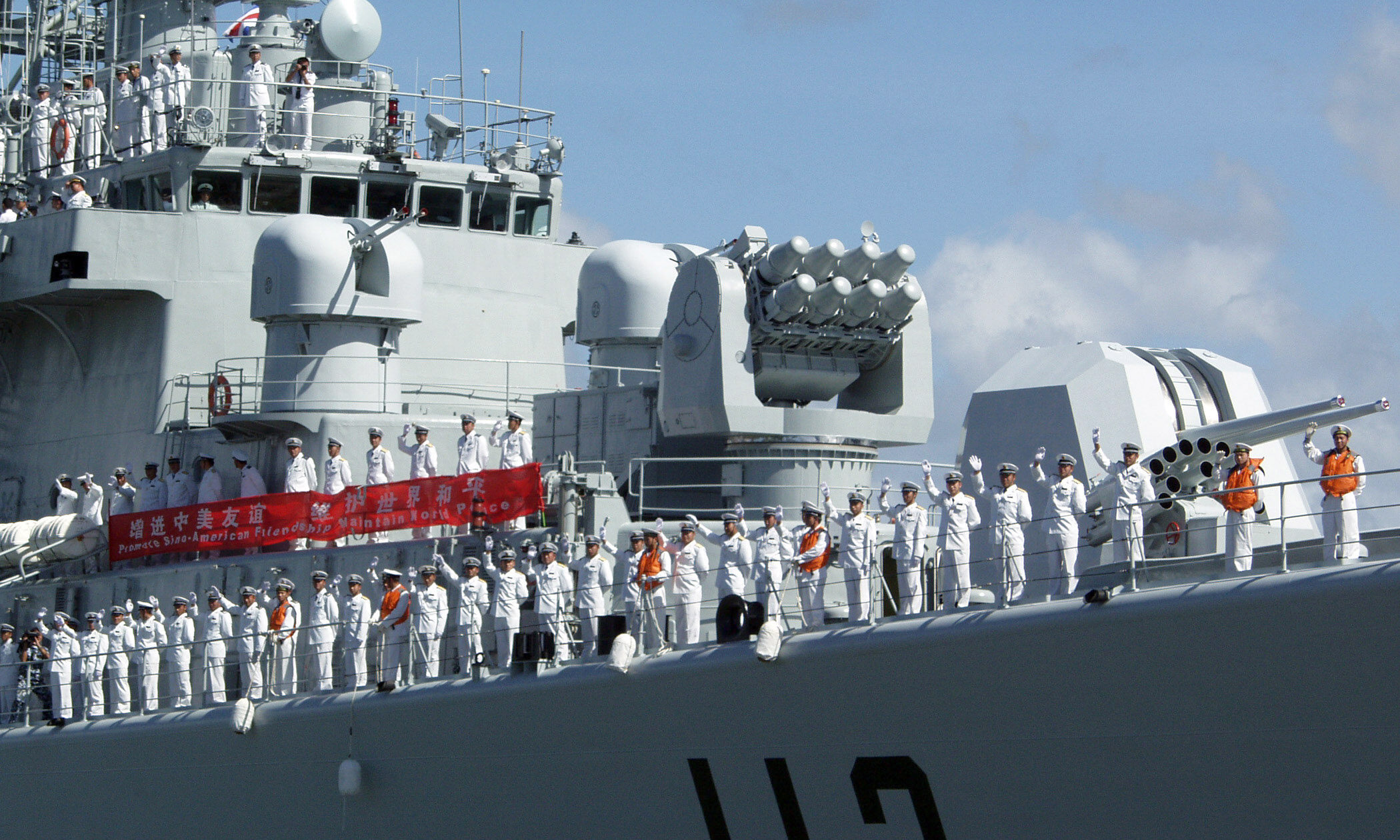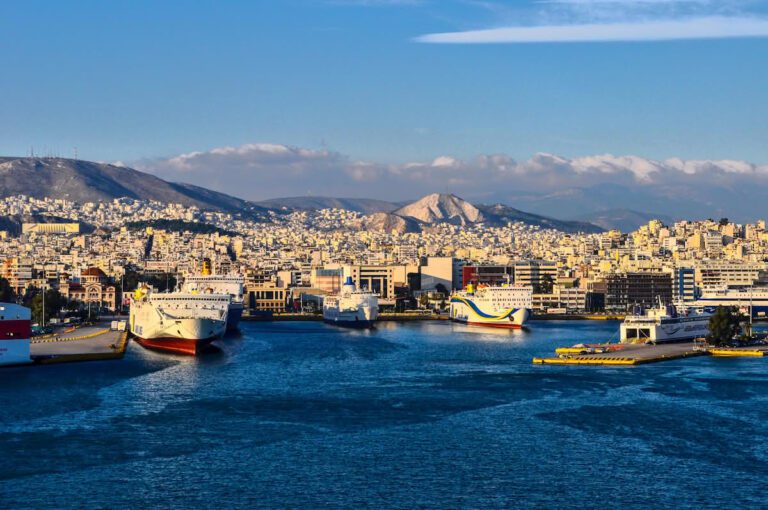
As tensions continue to rise in the Middle East, China, Russia, and Iran conducted joint naval drills in the Gulf of Aden and the Arabian Sea between March 11 and March 15, 2024. The exercise, under the name “Maritime Security Belt – 2024”, was described as a joint effort to safeguard maritime security and regional peace and stability. However, against the backdrop of the US and some EU countries’ unprecedented naval presence in the Red Sea, the drills can also be seen as sending a clear signal to the West and as a part of a longer-term pattern of boosting the trio’s mutual cooperation.
The tripartite naval exercise was the fifth of its kind since 2019 and spanned an area of around 17, 000 square kilometres, covering three out of the world’s five most strategically important straits. The exercise included naval and aviation forces with the Iranian Islamic Revolutionary Guard Corps also introducing new warships, such as its Shadid Soleimani class corvettes. In addition to those, the three countries sent more than 20 ships to participate, including Iranian frigates and fast-attack boats and Russia’s cruiser Varyag, while the Chinese navy dispatched a guided-missile frigate as well as a guided-missile destroyer. For the first time since their naval drills began, observers from other countries were also allowed to be present. Among these were observers from Pakistan, with whom China also conducted a naval military exercise in the Indian Ocean in 2023, Azerbaijan, Oman, Kazakhstan, South Africa, and India.
Although Beijing stated that this was not in any way related to the recent developments in the Middle East, the naval exercise nevertheless took place amidst rising Houthi attacks on commercial ships and an intensifying situation in Gaza. Furthermore, the scope of the drills was also larger than that of previous ones, hinting at China, Russia, and Iran using it for power projection and for reinforcing their position in the region.
Forging Closer Ties
In the past couple of years, the trio has been working towards forging closer ties and advancing a common, anti-Western, foreign policy. Although not an alliance per se, China’s competition and Iran and Russia’s enmity with the US and the West in general, are acting as a driving force behind the three countries’ growing ties. Iran has a history of being targeted by international sanctions, which have been continuously crippling its economy, most recently after Donald Trump’s withdrawal from the JCPOA in 2018. Russia has been the target of serious Western sanctions since its invasion of Ukraine in 2022, while China faces its own economic and political rivalry with the US, which is likely to escalate further still if Donald Trump wins the 2024 elections.
As a result, these three countries, though not always on the same page, have started to forge closer relationships and propagate a heavily anti-Western narrative, aiming for a multipolar world order. Russia, China, and Iran all see economic cooperation as the foundation of their relationships. They also belong to some of the same multilateral organizations, including the BRICS and Shanghai Cooperation Organisation, which allow them to interact with each other on a more regular basis and improve their bilateral trade and investment opportunities.
The trio is also actively working together to bypass Western sanctions and other restrictions, providing Russia and Iran a lifeline and enabling their economies to withstand the severe economic impact of existing international sanctions. While Iran is heavily dependent on China for its oil exports, with China buying around 90 percent, Russia has developed a significant dependence on Iran with regards to the supply of drones for its war effort in Ukraine. Tehran has presumably also been helping Russia with building a drone manufacturing factory close to Moscow to mass produce Iranian-designed kamikaze drones.
This is particularly worrying for Washington and its allies, as a potentially strong anti-Western alliance is reminiscent of Cold War years and could lead to more countries joining the anti-Western entente in their pursuit of challenging the role of the US and instilling a new world order.
Counter Strategic Military Coalition
The recent joint naval exercise serves as a reminder for the US that the trio is seeking to create a military counterbalance vis -á- vis the West, and underscores the growing coordination of actions between the three countries. For Beijing and Moscow, the deepening ties with Iran also serve as insurance against Houthi attacks on their commercial ships, guaranteeing the two countries that their economic interests will be left untouched. With regards to Iran and its proxies, the strengthening cooperation with China and Russia, and the lack of pressure from Beijing to stop Houthis from attacking in the Red Sea, could further enable it to take even braver and bolder actions against the US and its allies in the future.
The alarms are sounding loud in Washington as the post-October 7, 2023 Middle East faces the most volatile conditions in the past 50 years. The current situation presents a perfect opportunity for malign actors, such as Iran and its proxies, to further destabilize the region and reshape the Middle East according to their own designs. Since the Hamas attack in October 2023, the Middle East has seen Iranian proxies in Lebanon, Iraq, Yemen, Syria, the West Bank, and Gaza undertake operations to undermine the US’ influence; prevent further mutual integration of regional actors, particularly with regards to countries such as Saudi Arabia normalizing ties with Israel; and exploit the increasingly chaotic landscape to their benefit.
Challenges Abound
The recent years have seen Beijing close a 25-year strategic agreement with Tehran and a “no limits” partnership with Moscow. The trio has been drafting plans to establish tariff-free blocs and create new payment systems and alternative trade routes. However, their shared idea of anti-Westernism, anti-Americanism, and commonalities in their approaches to international order might not be enough for the three countries to successfully cooperate on an operational level.
For one, Iran’s relations with China are not as rosy as they might at first appear. Tehran is increasingly unsatisfied with economic results of the cooperation, as it only ranked as China’s 38th trade partner in 2023, far lower than other countries in the region, including the UAE or Saudi Arabia. Specifically, Iran’s trade volume with China stood below $32 billion in 2023, while China’s trade with the UAE and Saudi Arabia stood at $95 billion and $107 billion respectively. Moreover, although Beijing has been importing a majority of Iranian oil, it has also been cautious in its actions so as to not sabotage its business in the West. While Iranian officials argue that they have given China access and privileges that not many, if any, other countries enjoy, China has been seen as mainly taking advantage of its ties with Tehran to gain a foothold in the region and increase its influence in the Middle East. Currently, while China forges ahead in its partnership with Tehran, it is also clear that it is only willing to continue to do so as long as it reaps tangible benefits.
Iran and Russia are also likely to face challenges if they aim to significantly deepen their cooperation. Not only do the two countries lack experience in working together, the similarities in their economies make them unlikely to be able to deepen bilateral trade and become natural trading partners. After the international boycott of Russian oil in particular, Tehran and Moscow have been competing over winning a larger share of China’s energy imports. This has, consequently, resulted in price wars and Russia gaining the upper hand, particularly as some of its crude oil can be supplied to China through a pipeline, which presents a relatively cheaper option. Additionally, Russia is a larger producer of oil and, unlike Iran, is not targeted by secondary sanctions which makes it less risky for China.
The Future of the Anti-Western Entente
The progress in strengthening the ties between the three countries cannot be overlooked as it presents new strategic risks for the US and the West in the Middle East and beyond. However, despite the deepening ties, it is unlikely that the current climate will see a significant coordination of the trio’s actions on an operational level. While it might continue to serve as a tool for pushing forward an anti-Western narrative and, to a large extent, serving China’s interests not only in the region but on the international stage as well, it is unlikely that their cooperation will turn into an institutionalized cooperation or a truly cohesive alliance. While Iran and Russia battle with the impacts of international sanctions and continue to look for and create alternatives, Beijing is likely to remain cautious in its approach and might be reluctant to provide full backing to alternative trade routes or payment systems to bypass the West.
However, if Trump wins the 2024 elections and attempts to implement more stringent policies against China or try to force China out of the US market, there is a chance that Beijing will be more motivated to put greater efforts into deepening and building its partnerships within an alternative bloc, including with Russia and Iran.
Written by
Dominika Urhová
DUrhovaDominika Urhová is a China Analyst at AMO, specializing in China's foreign policy, Cross-Strait relations and China's influence in the Middle East and the Western Balkans. In the past, she contributed to the Middle East Policy Journal and to the research outputs of the Observer Research Foundation. Dominika holds a Master's degree in Security Studies and Diplomacy from Tel Aviv University and a Bachelor's degree in Development Studies with a concentration in Economic Development from Lund University in Sweden.


